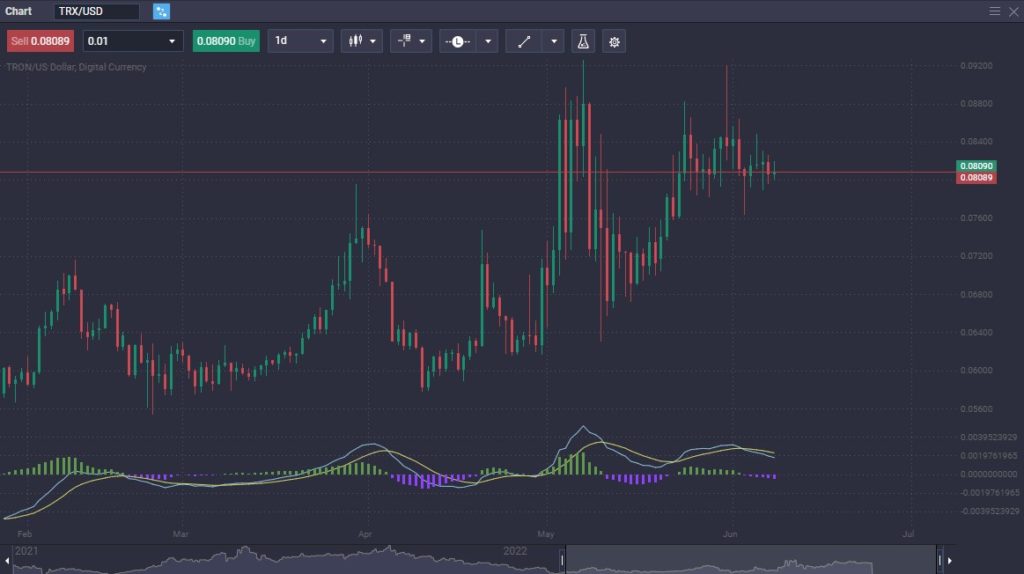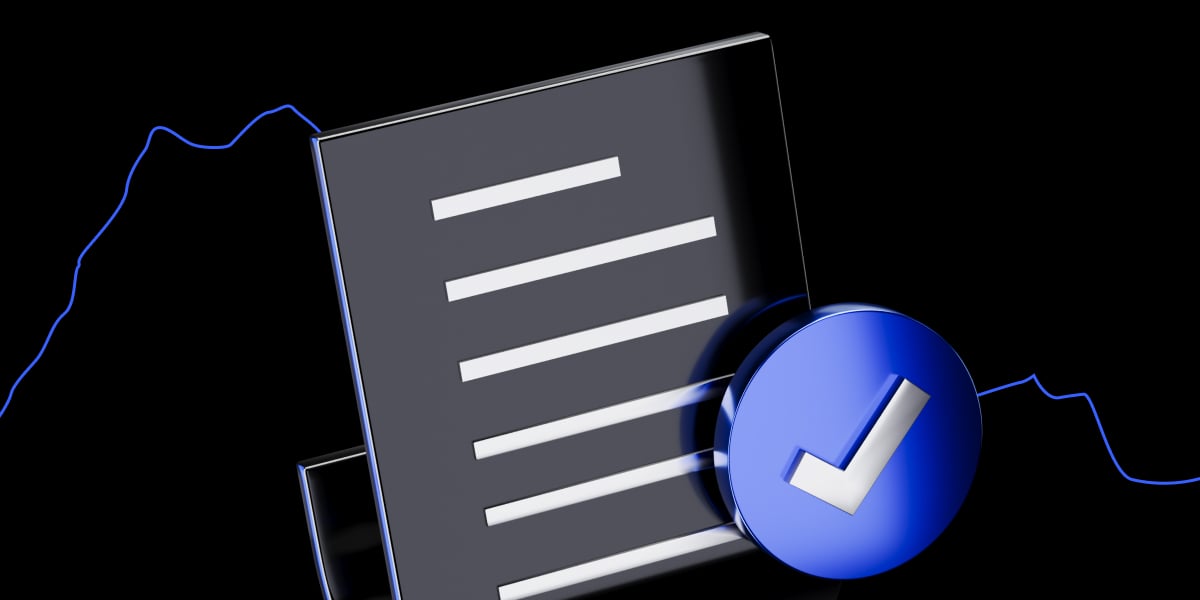Tron is a blockchain-based decentralized platform with its cryptocurrency called Tronix or TRX. Tron was founded in 2017 by the Tron Foundation, based out of Singapore. It aims to host a global system for cost-effective digital entertainment and content sharing.
What Is Tron (TRX)? – Definition & Meaning
Tron is a blockchain-based project created in 2017. It was a unique project at the time, as it did not seek to advertise any cryptography or design-related improvements. Decentralized applications, smart contracts, tokens, and its delegated proof-of-stake consensus were all pioneered by other projects.
Some people have criticized the lack of innovation in the project, but many approved the use of already tested features and processes rather than trying to build something new. This has allowed for a greater focus on user experience and design.
Tron has an incredibly active community of supporters and gained even more mainstream attention in 2018 when the nonprofit Tron Foundation acquired the peer-to-peer content-sharing platform BitTorrent.
Is Tron a Coin or Token?
TRX, the token used on the Tron network, is a token in the same way that Ether is one. TRX crypto is the native token of Tron and is used for fueling programs running on the network. TRX is considered a token rather than a coin because it serves a purpose other than only being in a store of value or medium of exchange.
The History of Tron
Tron was formed in 2017 by the Tron Foundation. It began on the Ethereum blockchain before migrating to its own blockchain in 2018. In July of that year, it acquired the filesharing service BitTorrent and incorporated it into the ecosystem.
In 2019, the TRC20-USDT stablecoin was launched on the Tron blockchain in partnership with Tether. Later in 2019, they announced a partnership with Samsung. As a result, Samsung Galaxy phones now support TRX.
2020 was a bit of a record-breaking year for Tron. There is a Tron section in the Samsung Play store now, and in August, JustSwap was launched, allowing instant exchange between TRC-20 tokens for traders. In late 2020, Tron even surpassed Ethereum as far as transaction volume is concerned.
Who Created Tron?
Tron was created by Justin Sun, who worked for Ripple previously. Ripple is the company that created the XRP cryptocurrency and the Ripple network. He was twice listed on Forbes Asia’s “30-under-30” list, highlighting the top entrepreneurs on the continent under the age of 30.
How does Tron (TRX) work?
Tron creates a new decentralized Internet with little to no reliance on third-party providers. The Internet is heavily dominated by a handful of companies controlling the lion’s share of data, web hosting, and advertising.
Quite a few people see this as a problem because a small number of people hold disproportionate control over how the Internet works. Tron seeks to “fix the Internet” in multiple ways:
- By making data free and uncontrolled.
- Creating an ecosystem that will reward users directly when sharing content.
- Creating an online infrastructure that allows for decentralized exchange of digital assets, including such things as games and market forecasts.
Tron is designed for decentralized applications (dApps) to reward people for the content instead of using their data to sell to marketers, such as YouTube, Facebook, Instagram, and others.
Tron Architecture
The Tron blockchain sends information through three different layers, including the storage layer, application layer, and core layer. These work as follows:
- The storage layer: The storage layer is designed to segment the data stored on the blockchain, and the state data of the blockchain itself, meaning the status of its smart contracts.
- The application layer: The application layer is used by developers to build applications and wallets powered by TRX crypto.
- The core layer: The core layer processes instructions in either Java programming language or a unique language written for Ethereum called Solidify. Instructions are sent to the Tron Virtual Machine, where programs are executed.
Delegated Proof-of-stake Consensus Mechanism
Instead of using the more energy-intensive and inefficient proof-of-work mechanism like Bitcoin, or the standard proof-of-stake method used by many other networks, Tron uses something called delegated proof-of-stake to reach consensus. Consensus is how parties on a blockchain agree the transactions are valid and recorded.
Tron uses a system of 27 super representatives to reach a consensus. The representatives rotate every six hours, with those being chosen given the ability to earn new TRX currency created by the protocol.
Blocks are added to the Tron blockchain, creating a new block every three seconds. Super representatives are awarded 32 new TRX tokens every time they produce a valid block. There are three different types of nodes that users can operate on the Tron blockchain, including the witness, nodesm full notes, and solidity notes. They perform the following functions:
- Witness nodes – Witness nodes vote on new decisions that make changes to the protocol.
- Full nodes – Full nodes broadcast blocks and transactions on the network for all to see.
- Solidity nodes – Solidity nodes provide the API (Application Programming Interfaces) and sync blocks from the full nodes.
Tron vs. Ethereum
As Tron is trying to take on Ethereum and many of its uses, it’s worth recognizing some of the similarities, as well as the main differences between the two networks and the way they are used and implemented.
| Tron (TRX) | Ethereum (ETH) | |
| Token | Tronix (TRX) | Ether (ETH) |
| Blockchain | Open source | Open source |
| Smart contract language | Solidity | Solidity |
| Token standards | TRC-10, TRC-20 | Range of various ERC standards |
| Speed of processes | Very fast | Slow but improving |
| Supply of circulating coins | 71.6 billion TRX | 116.6 million ETH |
| Total supply | 100.85 billion TRX | 116.6 million ETH |
| Transaction processed per sec. | 2,000 | 20, but updates will bring 10k |
| Launch of mainnet | June 2018 | July 2015 |
Tron Price Factors
Tron has multiple factors that come into the picture, as the crypto markets typically do. That being said, there is a lot of great potential in the TRX coin, and the Tron ecosystem itself. Trying to predict where it goes next is like speculating in any other crypto market.
Supply and Demand
TRX is not mined. Instead, the tokens are given as a reward to the super representatives on the network, although there is a maximum supply. There are roughly 72 billion coins, with a maximum supply of 101 billion. As more coins are given out, the lesser the supply is, so the price may increase. It also, of course, will depend on whether or not the token becomes popular or not.
Regulation
There have been calls for greater regulation of her cryptocurrency over the last couple of years, and it is no great surprise that this is the case as it has become much more popular. There have been a lot of scams involving either the use of crypto or the pumping of a market. Worldwide regulations are coming down the road, so it does have a significant impact on markets, but as things stand right now, it’s still a bit of a wildcard.
One advantage of Tron is that the Tron Foundation is already under the Singapore Company Law supervision, making it more regulated than many others. Singapore is one of the major global hubs for cryptocurrency.
Partnerships
Tron has entered various partnerships over the last couple of years, including with electronics giant Samsung. Prospects look good for future collaborations, as Tron has also announced a new partnership with the PRC National Development and Reform Commission, part of the Chinese government.
The Popularity of DApps
Tron has become one of the leading platforms for decentralized applications, and in the coming years, it looks like this trend will continue. However, we are still at the beginning of exploration, so it is difficult to know how this ends up. Decentralized applications certainly have a use, and with this field growing over the next several years, this could bode well for Tron.
How Is TRX Used on The Network?
The currency used on the Tron network is called “Tronix,” abbreviated TRX. There are many uses for TRX, with the following being the most common:
- TRX is used to pay for content that users want to access, with the TRX going straight to the creators. This allows it to reward individuals for what they do with hundreds of dApps on the Tron network. The TRX tokens can be exchanged for other cryptocurrencies or pay for services on the same blockchain.
- TRX can be used to pay for everyday goods and services, although it is not widely accepted in that role.
- TRX can be a store of value in theory, in the same way, Ethereum or Bitcoin can be. Price appreciation is what holders typically will hope for, like any other asset.
- Tokens can be locked away to gain the ability for voting rights over decisions made on the network. Tokens locked away cannot be used simultaneously, be it by the holder or anyone else. They can be unlocked at any time.
How to Buy Tron (TRX)
It is easy to buy TRON, as it is a widely traded cryptocurrency. The major exchanges all carry the coin, and you would be hard-pressed to find one that doesn’t. The question is whether you are going to keep your coins on the exchange or if you are going to store them in a TRON wallet.
Most exchanges will ask for personal information known as “KYC” or “Know your customer.” This is an identification procedure similar to opening a bank account to prevent money laundering and terrorism financing.
If you are looking to hold onto the TRX that you have purchased for a significant amount of time, then you will be looking to keep it in your TRON wallet. However, if you are looking to trade short-term, you are better served to forgo the exchange and trade CFDs at PrimeXBT. CFDs allow you to take advantage of price movement without the complications of owning the asset.
How Is the Tron Network Secured?
TRON is secured using a delegated proof-of-stake consensus mechanism. The network will change validators every six hours, as voted on by the TRX token holders.
TRON is unique because there is a “Bug Bounty” program. The Tron Foundation offers rewards for any vulnerabilities or bugs that are found on the network. The network users can improve it, secure it, and improve the overall usage of TRON.

https://tron.network/findBug?lng=en
What Are the Advantages of Tron?
There are a lot of advantages when it comes to the Tron ecosystem and its cryptocurrency. Some of the following are the most important:
- Low transaction fees – Tron features very low transaction fees, being almost nonexistent as you only have to pay $0.000005 when you make a transaction.
- High volume ability – Tron can allow a greater volume of transactions. Some of Ripple’s fundamental principles and popular traits have been thrown into this ecosystem, allowing for a massive volume of transactions.
- Speed of transactions – Tron has high-speed transaction capability, doing as many as 2000 per second. The ability to process so quickly significantly influences the hype and the future position of Tron in the online world.
What Are the Disadvantages of Tron?
While the Tron ecosystem and the Tronix token are beneficial and promising, there are some disadvantages you should be aware of:
- Centralized – There are a lot of complaints that the Tron platform is a bit too centralized. This is especially true as there are only 27 super representatives.
- Latecomer – Tron is a relative latecomer to some of the applications it is looking to replace, putting it in direct competition with Ethereum, which is much more established.
- Lower developer activity – It’s worth noting that developer activity has slowed on the network, which is generally a sign of trouble. Cardano currently leads developer activity, with Polkadot and Ethereum ranking close to it. Tron faces extreme competition.
- Price influenced by others – Unfortunately, Tron is heavily influenced by other cryptocurrencies, as the entire crypto market tends to move in the same general direction. Bad news for Bitcoin or Ethereum typically shows up in the price charts for Tron.
Is Tron Crypto a Good Investment?

In the end, investors will have to come to this conclusion themselves. TRX isn’t mined directly, so the economics of the ecosystem will rely heavily on the number of coins that are locked up. The tokens are locked up by holders who choose to stake them, in order to validate transactions on the network.
On December 18, 2017, Justin Sun of the Tron Foundation announced that they had locked up roughly $34 billion worth of TRX until January 2020. The move is designed to bring about scarcity. It was done again in September 2020, as 5 billion TRX were locked in the DeFI exchange JustSwap, causing the coin price to almost double.
If the demand for TRX increases, this will drive up the price, as so many coins are locked up at a time. There is no real way to know how demand will fluctuate, though. Because of this, you should always diversify when it comes to your crypto investments.
In conclusion, Tron has a future, but whether or not it takes over the world is a completely different question. It does have a bit of a unique use case scenario as it allows creators to get paid for their content, so it’s very possible that we may see some type of YouTube or Instagram platform based on the network. At that point, it comes down to whether or not the creators become popular enough to have people using the token.
There are other uses of course, but at this point, it seems like entertainment and content creation are by far the biggest push. This does make it a bit unique, and therefore it’s very likely that there will be used for Tron in one form or another down the road. However, a lot of its advantages are evaporating as Ethereum is upgrading drastically, and there are plenty of other competitors.
Tron is probably best thought of as part of a balanced portfolio, but as it has fallen out of the top 10 cryptocurrencies around the world, it’s very speculative, to say the least. Nonetheless, the high growth potential does make it an interesting speculative asset.
How is Tron different from Bitcoin?
TRON is one of the fastest-growing blockchains. It also has the ability to handle as many as 2,000 transactions per second, while Bitcoin can only handle up to 6 transactions per second.
What's the future of TRON?
TRON is expected to keep growing over the next several years. There are now over 73,000,000 accounts, with over 2.8 billion transactions completed. (As of 2022) The coin is expected to rise in value over time but will be susceptible to the same growing pains as the rest of the crypto world.
How high can TRON go?
It seems very likely that TRON will eventually break above the $1 level. However, when that happens is unknown, as the cryptocurrency markets tend to move in the same overall direction. The future for TRON seems to indicate that higher prices should be expected.
How do you mine a TRON coin?
To mine a TRON coin, you must open a TRON wallet. This is where your mining rewards are received. The most common way to mine TRON is by using a GPU mining software package. You can also use a few mining sites and pools as well. These generally involve mining Ethereum and then exchanging it for TRX.
What type of coin is TRON?
TRON was initially a token on Ethereum but has since been moved to its own network in 2018. The TRON cryptocurrency is now its own coin, TRX.
The content provided here is for informational purposes only. It is not intended as personal investment advice and does not constitute a solicitation or invitation to engage in any financial transactions, investments, or related activities. Past performance is not a reliable indicator of future results.
The financial products offered by the Company are complex and come with a high risk of losing money rapidly due to leverage. These products may not be suitable for all investors. Before engaging, you should consider whether you understand how these leveraged products work and whether you can afford the high risk of losing your money.
The Company does not accept clients from the Restricted Jurisdictions as indicated in our website/ T&C. Some services or products may not be available in your jurisdiction.
The applicable legal entity and its respective products and services depend on the client’s country of residence and the entity with which the client has established a contractual relationship during registration.




